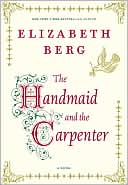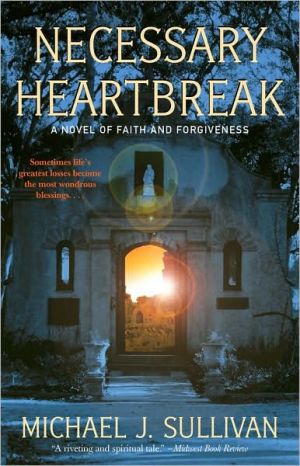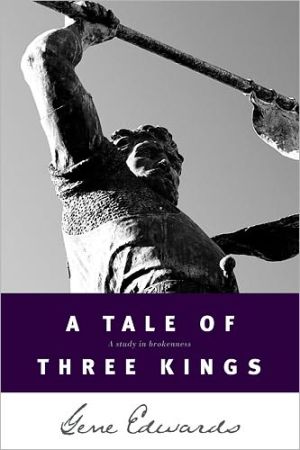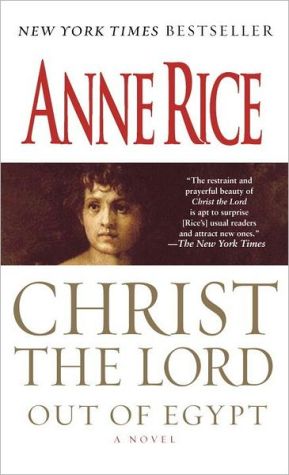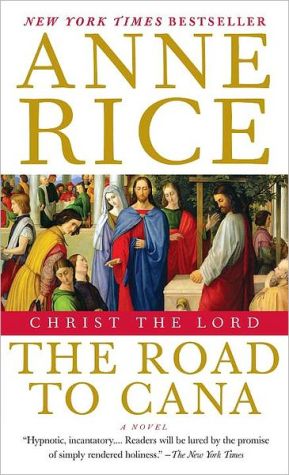Quarantine
Winner of the Whitbread Novel of the Year and a Booker finalist: a controversial novel of faith and mystery about a group of desert travellers and their encounter with Jesus\ Quarantine is Jim Crace's imaginative and powerful retelling of Christ's fabled 40-day fast in the desert. In Crace's account, Jesus travels to a cluster of arid caves where he crosses paths with a small group of exiles who are on a pilgrimage to find redemption. One wealthy and manipulative quarantiner recognizes...
Search in google:
Quarantine is an imaginative and powerful retelling of Christ's fabled forty-day fast in the desert. In Jim Crace's account, Jesus travels to a cluster of arid caves, where he crosses paths with a small group of exiles and changes their lives in unexpected ways. Evoking the strangeness and beauty of the desert landscape, Crace provocatively interprets one of our most important stories.Richard EderEngaging...magical...There is wit and meat in every detail....Crace's portrait of Jesus is audacious and disconcerting. —Los Angeles Times
\ From the Publisher\ "Remarkable . . . The effect is almost hallucinatory."—Frank Kermode, The New York Times Book Review\ "Stunning . . . extraordinary . . . One of the freshest and most inventive novelistic uses of biblical material I have read."—Minneapolis Star Tribune\ "A spiritual mystery of the best kind . . . Crace is a master at creating a convincing landscape out of evocative, earthy details . . . The creation of an ambitious imagination . . . A literary miracle."—USA Today\ "A superb book . . . It succeeds thanks to Crace's potent, imaginative rendering of the characters and the setting, and because of its distinctive, lilting language."—Time Out New York\ "Immensely impressive . . . This novel is a high-wire act, a tour de force, a garment expertly tailored from materials of the highest quality."—Bruce Bawer, The Washington Post Book World\ \ \ \ \ \ \ Chicago Sun-TimesStunning...extraordinary...One of the freshest and most inventive novelistic uses of biblical material I have read.\ \ \ Gary KamiyaFor a novelist, the figure of Jesus looms like Mount Everest: at once irresistible and daunting. To write about Jesus one must walk a shuddering tightrope between humanity and divinity. Only mystics, true believers or madmen would embark on that journey without trepidation.\ The problem is that at some point the novelist must show his hand: either affirm the divinity of Jesus, in which case his work may feel like a penetrating illustration of the scriptures; or deny it, with the danger that his work may feel merely reactive. He can also, of course, blur the issue, avoid answering the question -- but this solution, too, rarely satisfies. Religion can't tolerate the same kind of ambiguity that literature does. Quarantine, by British novelist Jim Crace, is a tour de force of historical and psychological realism that offers an ingenious variation on a key episode in Christian myth -- but it does not entirely succeed in overcoming these problems.\ With Quarantine, Crace -- whose earlier novels include Arcadia, Continent and Signals of Distress -- has joined the list of illustrious writers, including Dostoevski, Kazantzakis and Mailer, who have dared to tackle this blindingly unportrayable figure. While Kazantzakis, with passionate ambition, recounted Jesus' entire adult life as a second-to-second struggle between his Godhead and his humanity, and Mailer, in his embarrassingly prosaic first-person effort, covered everything from Jesus' childhood to his crucifixion, Crace has chosen to tell a much smaller story, and in a much more indirect way. In Quarantine, Jesus is just one of seven characters -- and not the central one. Crace's Jesus isn't as peripheral as Hamlet in Stoppard's Rosencrantz and Guildenstern Are Dead, but Quarantine shares that work's intentionally eccentric perspective. This sidelong approach breathes fresh life into a story so vast and familiar it can barely be seen anymore -- but it also diminishes its scope. Quarantine is flawlessly executed, but it seems more like a short story than a novel.\ Crace has chosen as his subject Jesus' 40-day "quarantine" in the wilderness, described in Matthew 4:1-11: "Then was Jesus led up by the Spirit into the wilderness to be tested by the devil." An agonizing trial in which he must fend off the three temptations offered by the devil, it is key moment in Jesus' life. Crace's original spin on the story is to focus not primarily on Jesus, t on six people who find themselves sharing the same barren stretch of mountains near the Dead Sea with him. Of these the most important is a loathsome character named Musa, a merchant who, along with his downtrodden, pregnant wife, Miri, has been traveling with a trading caravan through the wilderness.\ Miri and Musa are joined in the wilderness by five people, each traveling alone, each undertaking a quarantine in hopes of miracles or enlightenment. The first is a bedouin or "badu," a strange, voiceless creature who seems little more than an animal. The second, Shim, is a cosmopolitan Gentile from the north, perhaps a Greek, who has come to the desert in search of some nameless wisdom. The third is an older Jew named Aphas, who is afflicted with a cancerous tumor in his side that is killing him. The fourth, Marta, is a childless married woman who has come to the desert in hopes that she will miraculously conceive. Her husband, in ccordance with Jewish law, has told her he will divorce her if she does not conceive by harvest.\ "The fifth, a male, was far younger than he might have seemed from a distance," writes Crace. "Not much more than an adolescent, then ... He was a traveller called Jesus, from the cooler, farming valleys in the north, a Galilean, and not one used to deprivations of this kind ... He'd put his trust in god, as young men do. He would encounter god or die, that was the nose and tail of it. That's why he'd come. To talk directly to his god. To let his god provide the water and the food. Or let the devil do its work. It would be a test for all three of them."\ When the story opens, Musa has been struck down by a fever and is near death. His fellow traders abandon him, taking his goods and leaving him with only a few goats, his money and Miri -- who prays for the death of the fat, brutal sensualist. In search of shelter and sustenance before his quarantine begins, Jesus is about to borrow some refreshment from Musa's apparently unoccupied tent when he hears a sound from Musa, who has briefly awakened from his fever sleep. He presses the "devil's air" out of the dying man's chest, shakes water over his face and says, "So, here, be well again" -- "a common greeting for the sick." Jesus leaves to begin his fast.\ Jesus' simple act sets in motion a plot that appears, at first, to be simply an ironic subversion of the orthodox Jesus story. Possibly thanks to Jesus' healing touch -- on this point, and all others that involve divinity, Crace is carefully ambiguous -- Musa comes back to life, but good does not ensue. He savagely beats his donkey to death, hectors his wife and hits upon a deceitful plan to bilk his fellow wilderness-dwellers: He tells them that he is the owner of the land and that they owe him rent. He also begins to think of ways to achieve his lustful designs upon the voluptuous Marta.\ From this point on, Quarantine mingles Musa's story, and to a lesser degree those of the pilgrims he manipulates, with the separate but related story of Jesus' ordeal. The impression that Crace's main aim is ironic is strengthened by the ways the stories overlap: When Shim and Aphas fling Musa's dead donkey off a cliff, for example, it almost hits Jesus, who is standing outside his cave down below looking for a sign from god. And the temptations Jesus must endure are not given by the devil, as in the Gospels, but are leather bags of food and water lowered by Musa, who shouts down to his "friend" and "healer" to come up and heal the others. Above all, there are Musa's evil deeds, culminating in his rape of Marta. But by the end of the story, the ironies of Crace's tale are outmatched by affirmation -- perhaps an affirmation of faith, perhaps merely of humanity, but affirmation nonetheless.\ — Salon\ \ \ \ \ \ Richard EderEngaging...magical...There is wit and meat in every detail....Crace's portrait of Jesus is audacious and disconcerting. —Los Angeles Times\ \ \ \ \ USA TodayA spiritual mystery of the best kind...the creation of an ambitious imagination...a literary miracle.\ \ \ \ \ Bruce BawerImmensely impressive...This novel is a high-wire acta tour de forcea garment expertly tailored from materials of the highest quality —Washington Post Book World\ \ \ \ \ Wall Street JournalImmensely enjoyable...Crace's vivid writing brings his clever take on the Bible to life.\ \ \ \ \ Boston Book ReviewA brilliantly imagined work.\ \ \ \ \ Seattle TimesAn incantory, compelling novel that stands beside Camus' The Stranger.\ \ \ \ \ John UpdikeStunning...Crace is a writer of hallucinatory skill.\ — The New Yorker\ \ \ \ \ Publishers Weekly\ - Publisher's Weekly\ This extraordinary novel, a sometimes realistic, sometimes hallucinatory account of the 40 days Jesus spent in the wilderness, is the latest by England's Crace, a writer of great gifts (The Gift of Stones, Continent), and was reportedly the runner-up to The God of Small Things for the Booker prize. It is a remarkably successful attempt to put a story known by everyone into a convincing physical and historical context. The beauty and precision of Crace's writing, as well as his store of knowledge about such arcane matters as weaving two millennia ago and the fauna of the Judean desert, give what could have been a fey experiment an air of overwhelming authority. For a start, Jesus, portrayed as a rather callow youth befuddled by prayer, is not at the center of the canvas. That spot belongs to Musa, a stout, lecherous, bullying merchant with a beguiling tongue, whose skinny and long-suffering wife, Miri, has left him for dead in his tent as the story begins. Then, Jesus is not the only pilgrim essaying a fast in the desert. Setting about their vigils in their very different ways are Shim, a handsome, self-absorbed ascetic; Marta, a prosperous but barren woman who yearns to conceive; Aphas, an elderly Jew with cancer; and a dumb, wiry peasant. After Jesus seems to bring Musa back to life (he is obsessed with the idea of being a healer), the merchant comes to dominate the group, using his salesman's skills to convince them that he is their landlord and they owe him tribute. Only the thought of Jesus, who hides from the rest in his inaccessible cave, gives him pause. As for Jesus himself, can Musa be the devil sent to tempt him? The ways in which Crace has the six desert dwellers interrelate with each other and with Jesus are spellbinding; the book is a superbly crafted combination of historical and inspirational fiction that is genuinely unique. Rights: David Godwin Assoc. (Apr.) (PW best book of 1998)\ \ \ \ \ Library JournalThe Bible tells of Christ's temptation by the devil during his 40-day fast in the wilderness. In his newest novel, the talented Crace (


